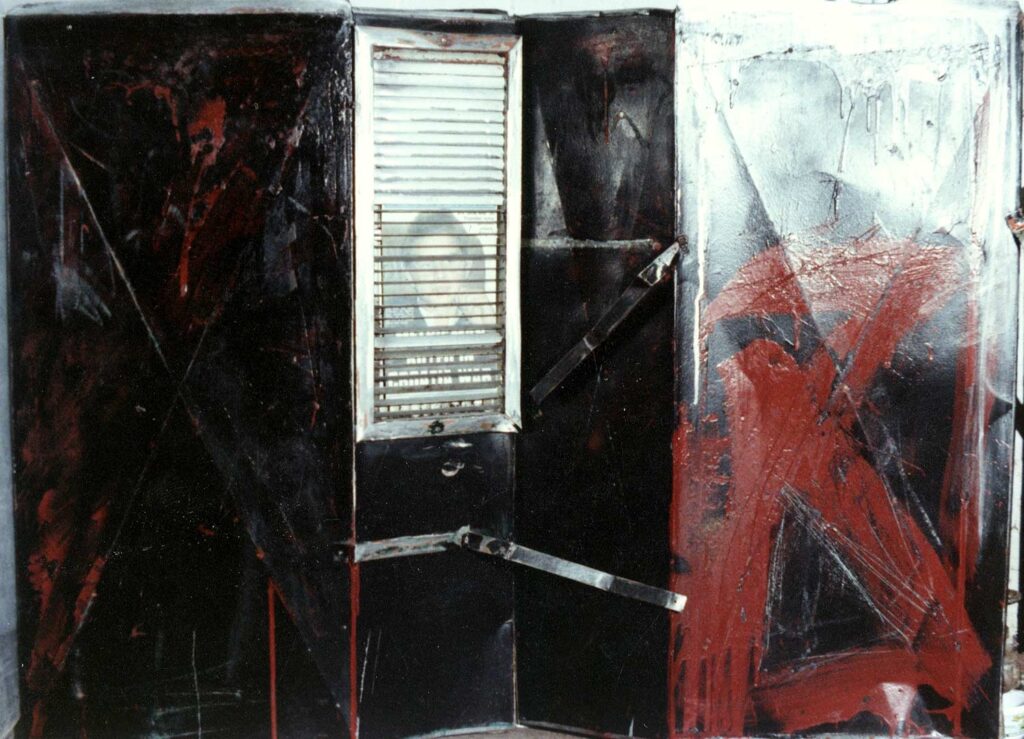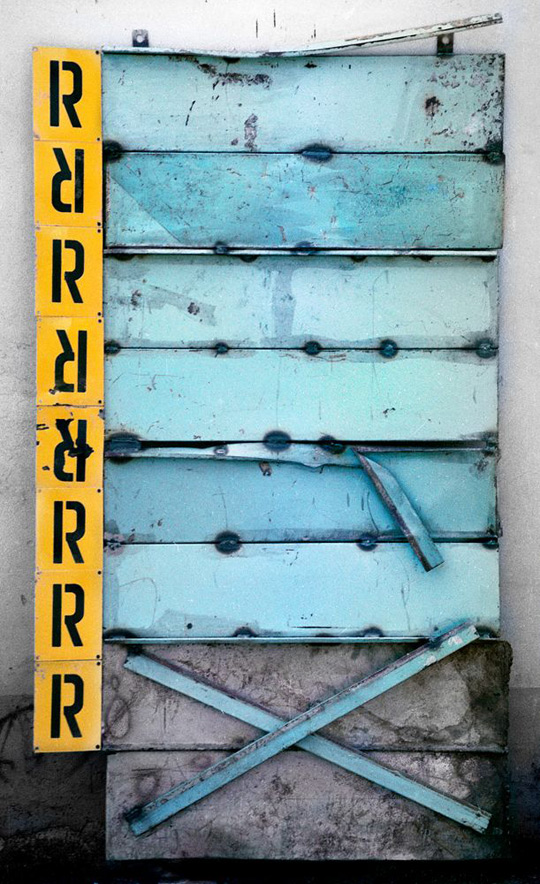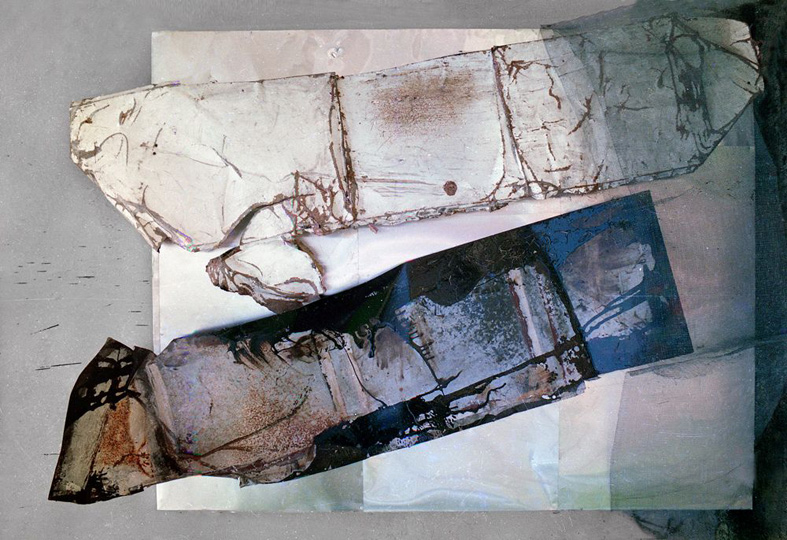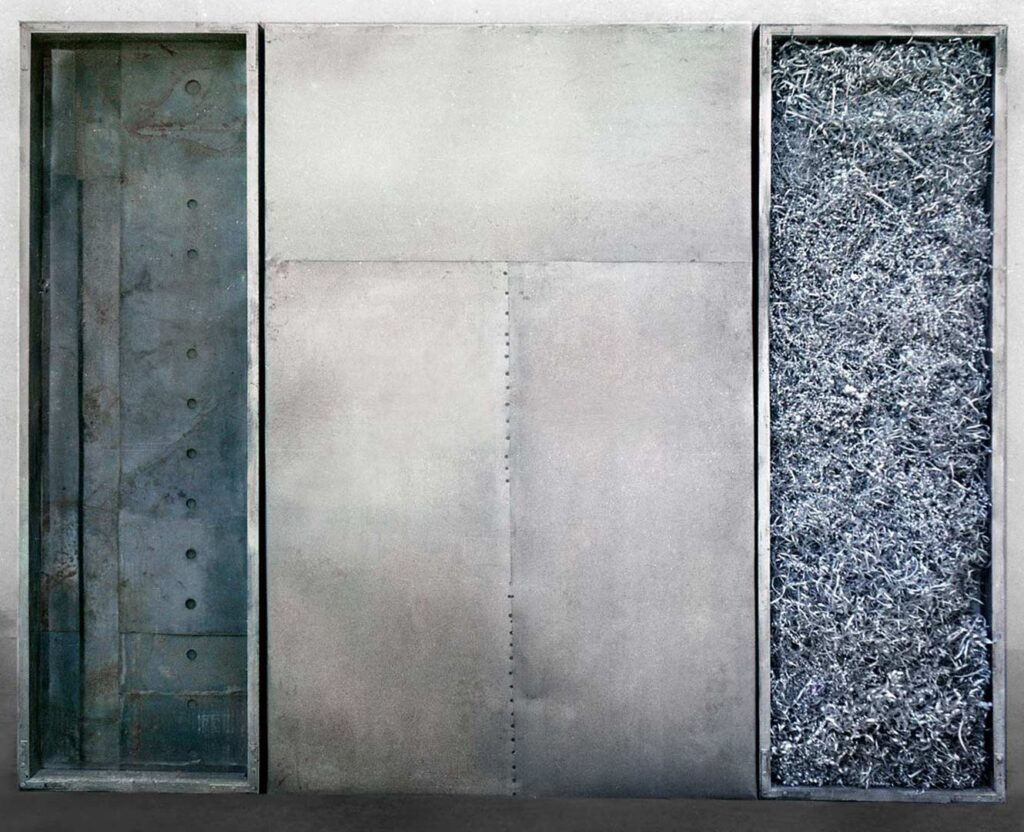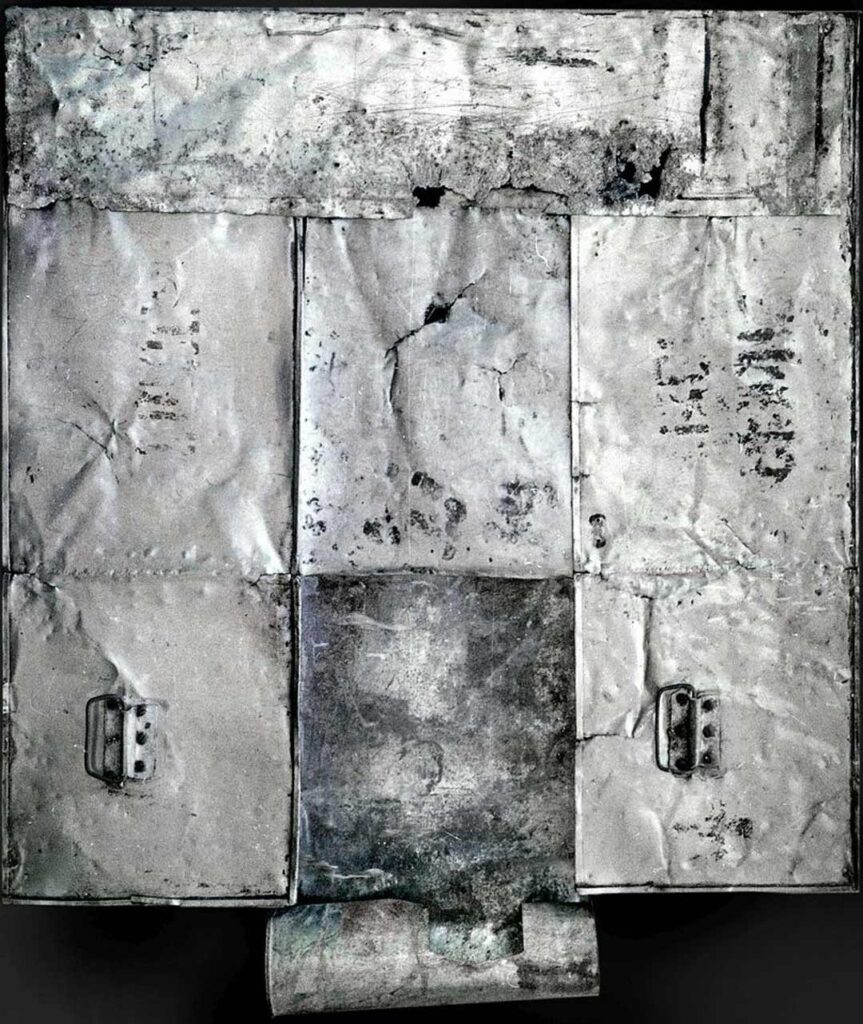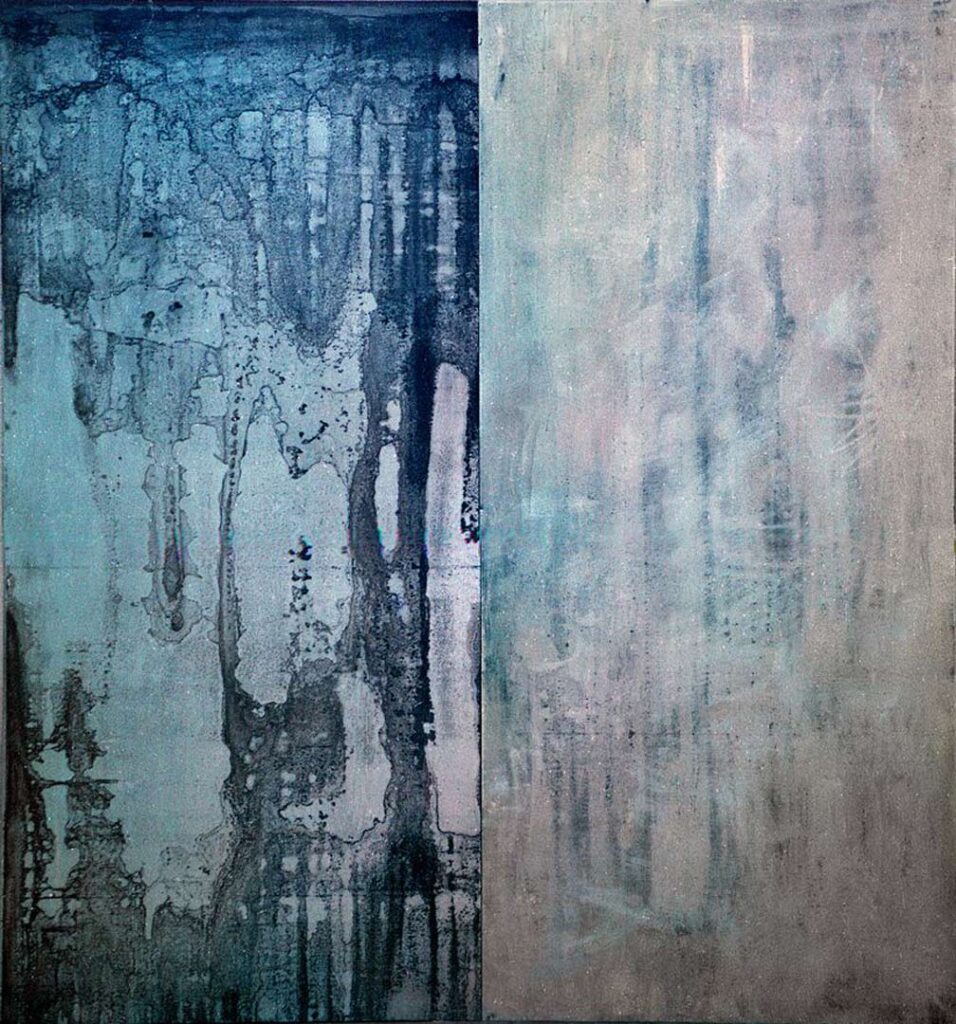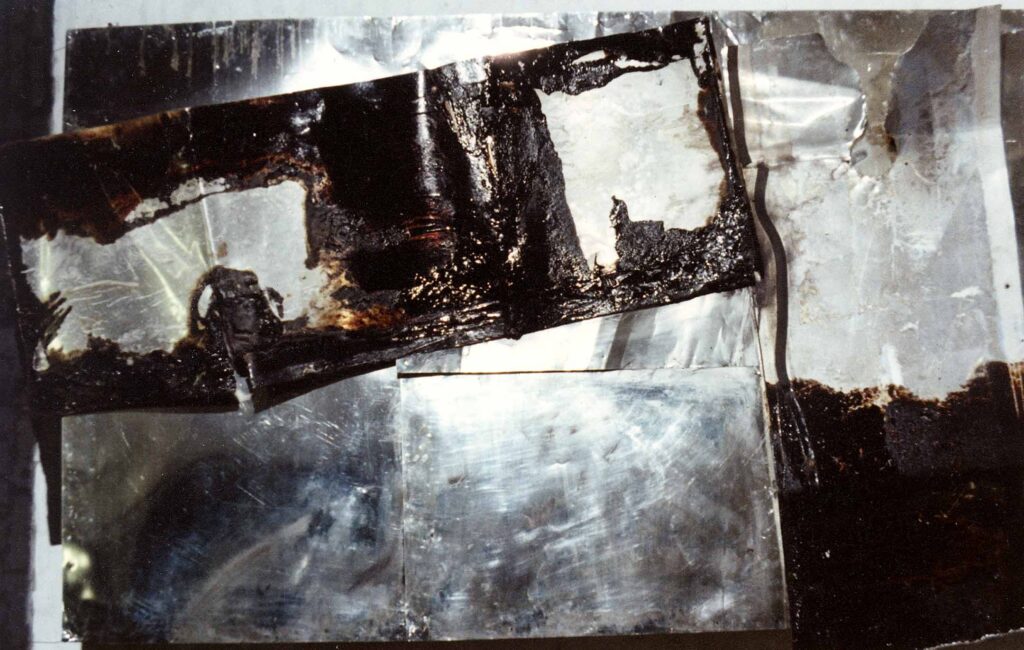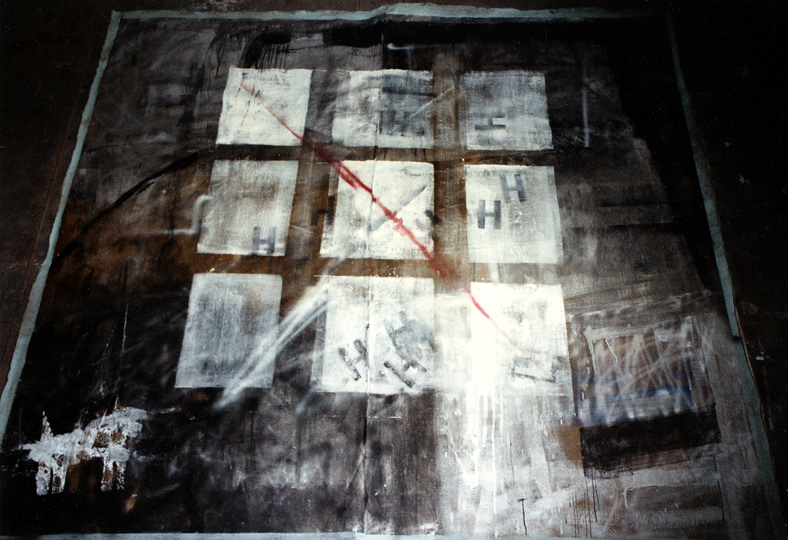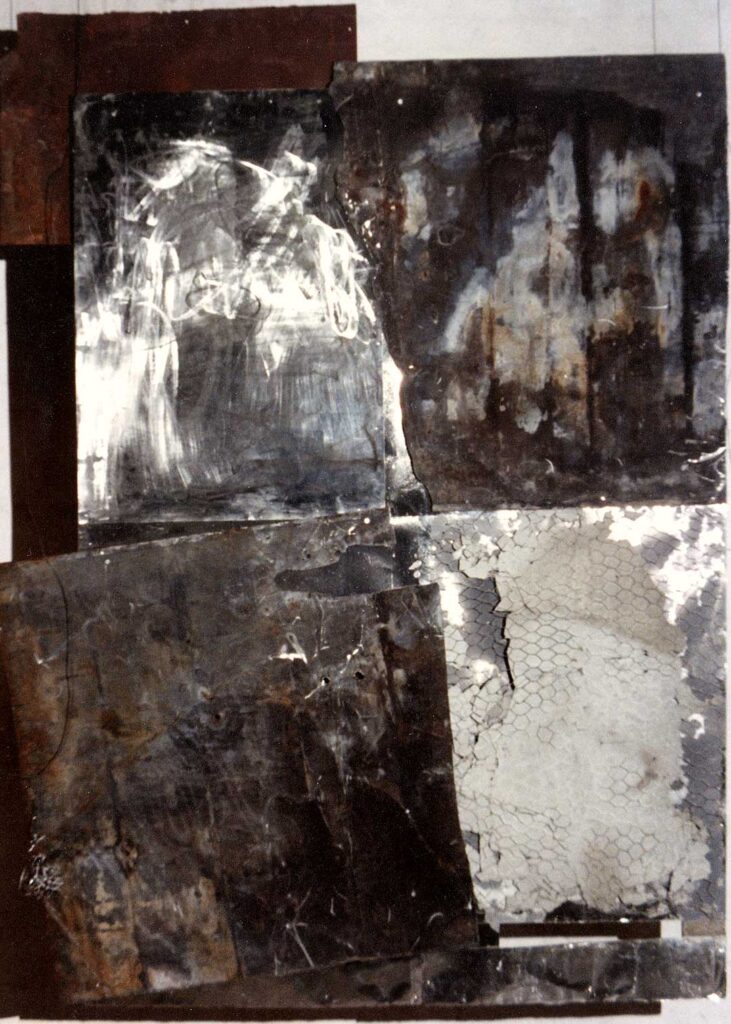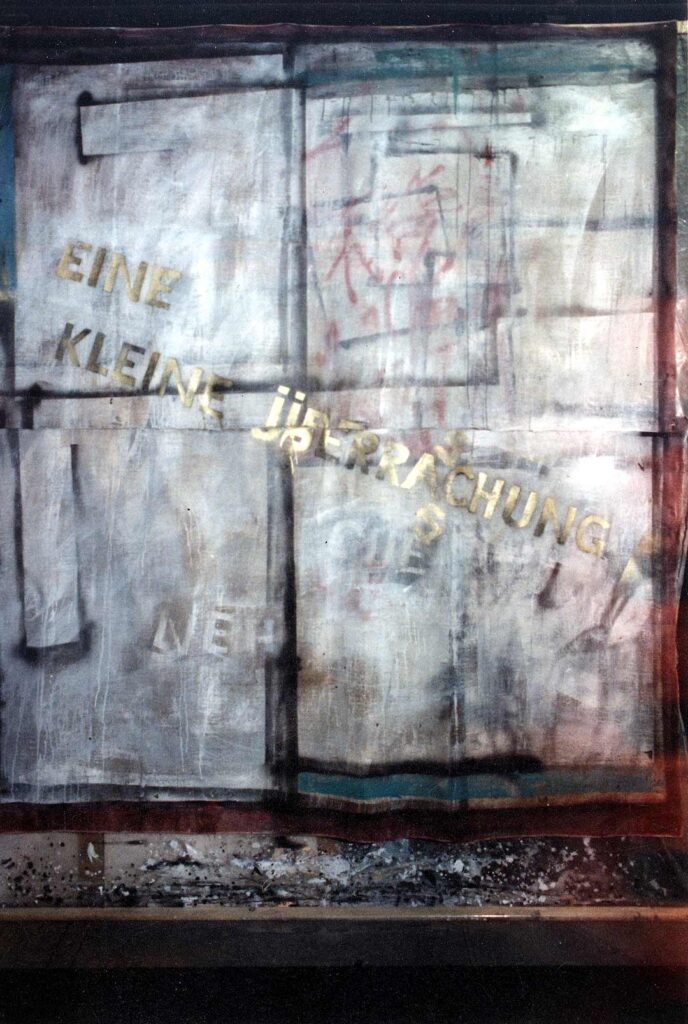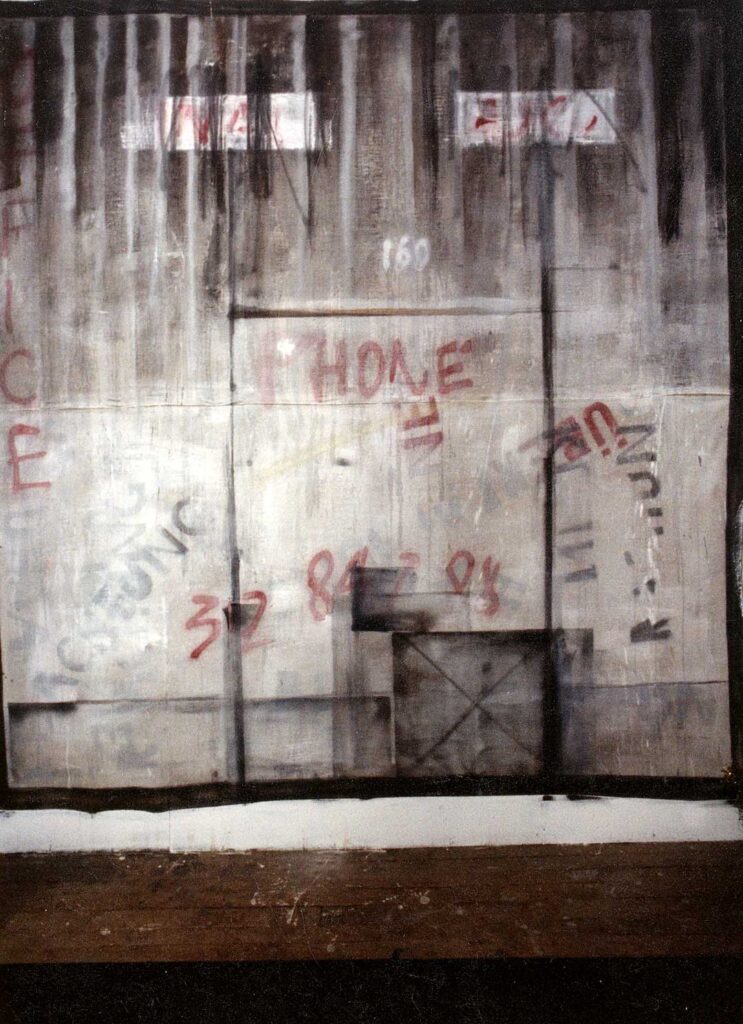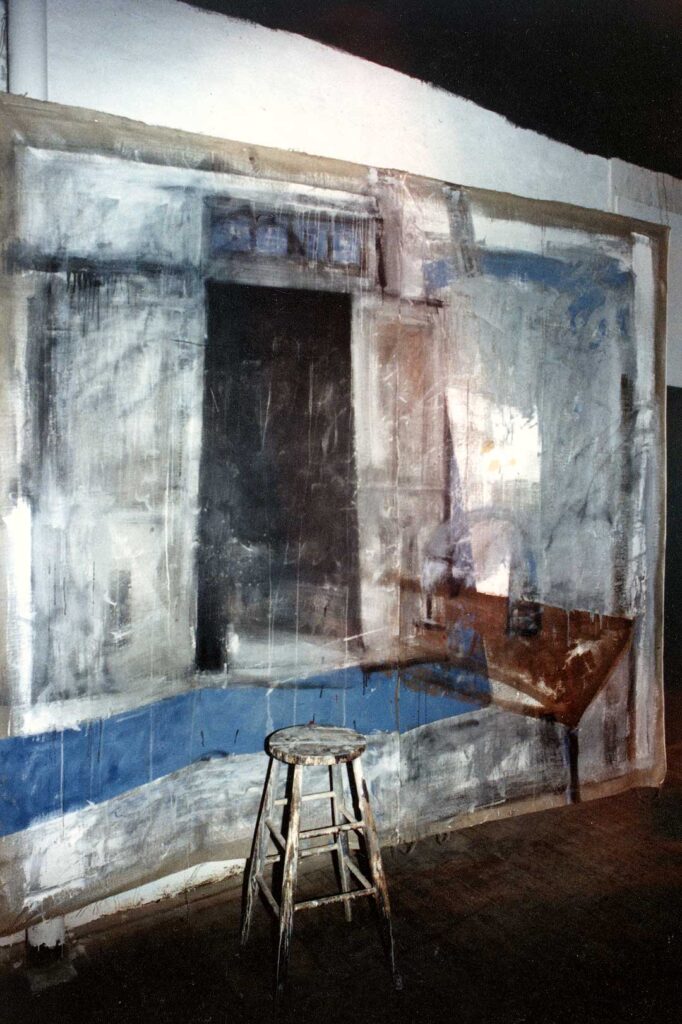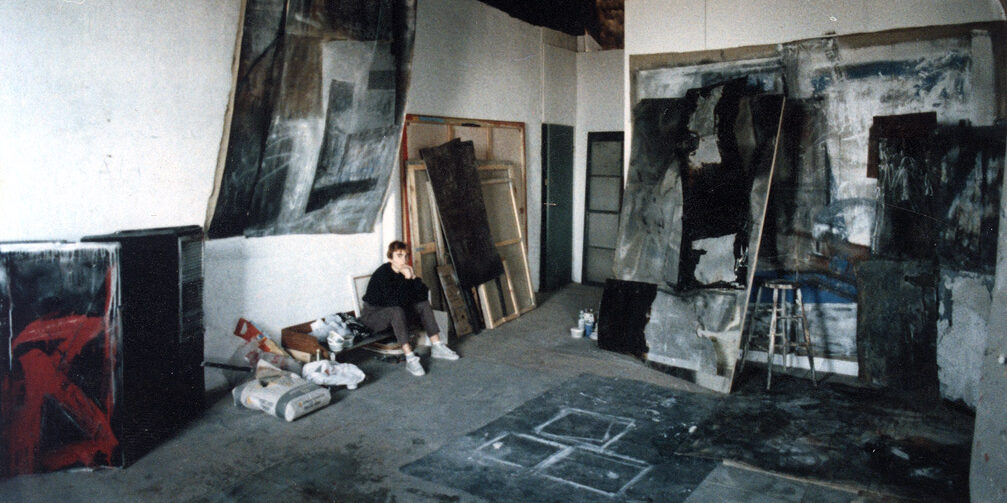Change of space
The artist spent the turn of the 80s and the 90s in Canada. That experience radically liberated her creative abilities. Her works are filled with great power – thwarting the spectators’ expectations about the artist’s physical prowess. The Canada experience was all about an artistic exploration toward something more monumental. The artwork is massive, powerful, painted on ginormous pieces of steel from junkyards. Recycling is the creative matter for Micherda-Jarodzka, who breaks away from the classical form of a painting using three-dimensional concrete elements made by herself. The spatiality of her paintings is directly linked to the reality she was surrounded by in Canada. In her works, one can see elements of letters – incoherent language.
